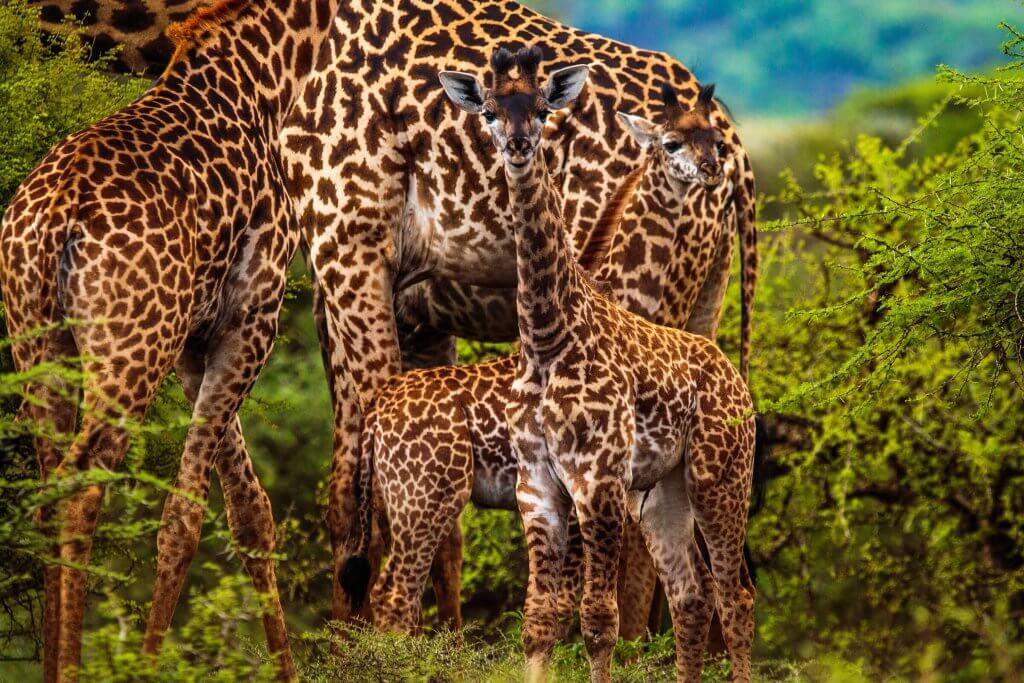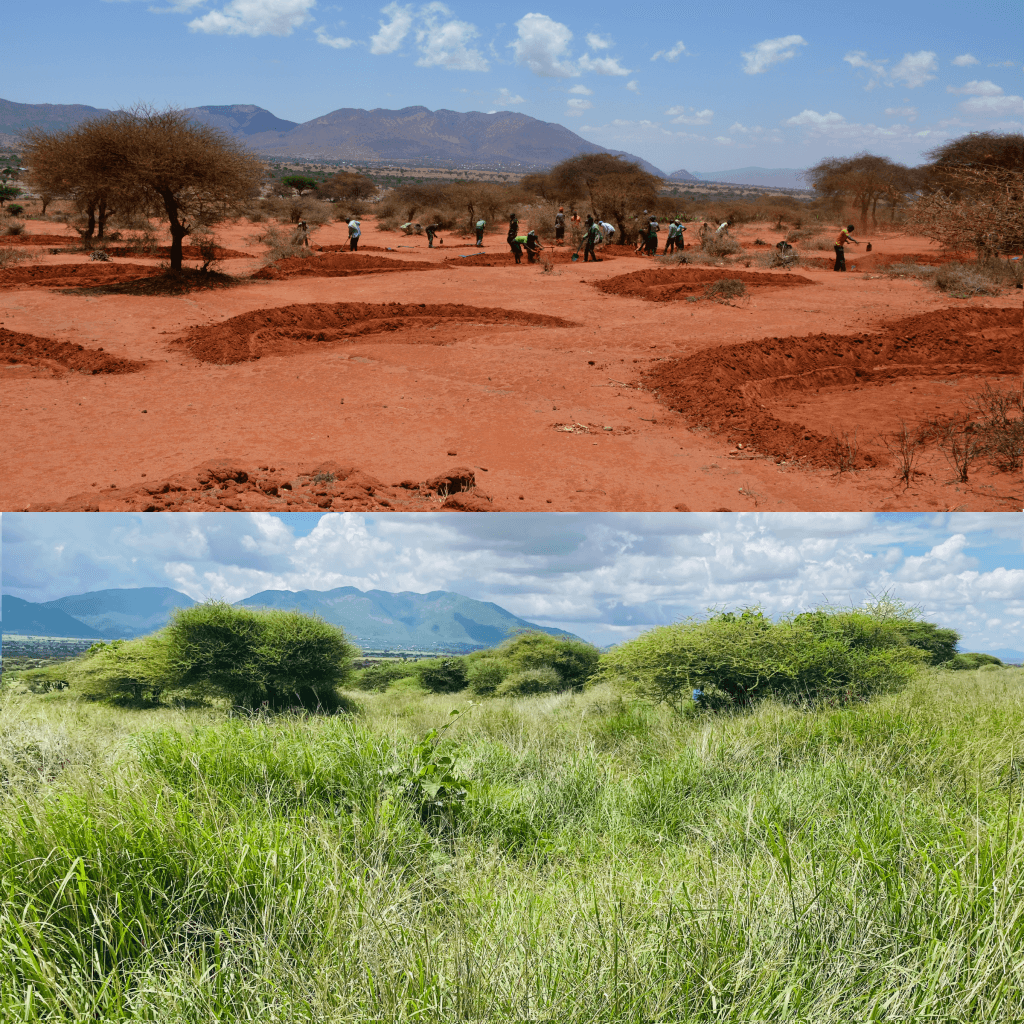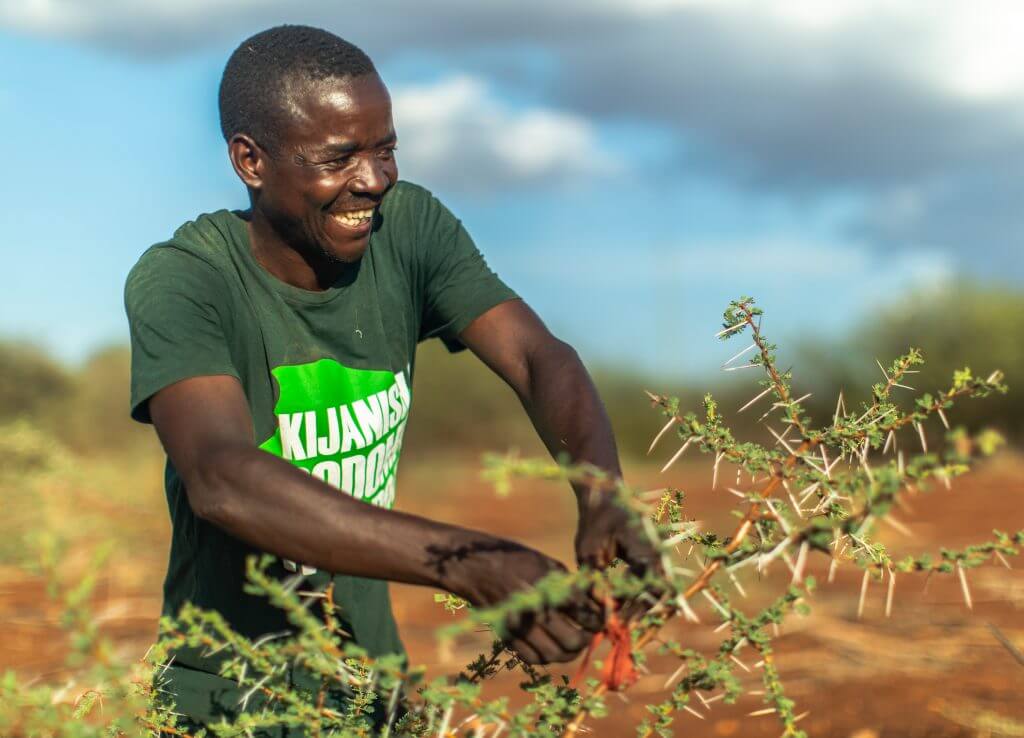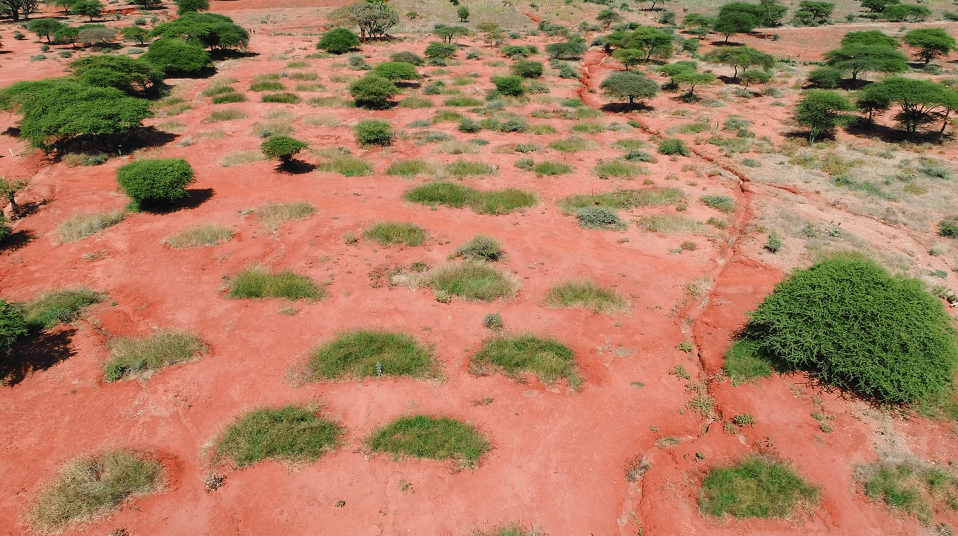
There are 10 years to get nature back on our side. The race is on.
Justdiggit
We cool down the planet by regreening African landscapes
Global warming is moving in fast.
Earth is drying up. Our job is to reverse it, and there’s one decade to do it. We know it is necessary to keep the global temperature increase below 2°C, to stop irreversible damage to the planet that sustains us. We need to act together and we need to act fast.
In Africa, 3.9 million ha of forests are lost each year*, and 65% of land is affected by degradation.
This results in increasing water and food scarcity, poverty, loss of biodiversity. Worldwide, there are 2 billion ha of restorable land. Africa has the largest restoration potential of all continents on our beautiful planet, with the opportunity to protect and bring back biodiversity to some of the world’s most precious ecosystems.
*based on research by the UN.
Luckily, we can turn things around!
Applying nature-based solutions to restore vegetation is the key to bringing down rising global temperatures. Plants and trees are the air conditioning of our planet: they remove carbon from the air and cool the surrounding area. Also, regreening and restoring degraded land positively impacts water and food security, biodiversity and creates a better life for millions of people and animals.
What we need to do, is to bring back nature and restore the planet’s balance. That is why we’ve partnered with the United Nations Environmental Programme, who declared 2021-2030 as the Decade on Ecosystem Restoration. Together we can make African land green, lush and cool by 2030.
At a local level. On a huge scale.
In our projects, we work closely with communities and local partners to restore dry land. Proven regreening techniques include rainwater harvesting (digging bunds), tree restoration (Kisiki Hai / FMNR), and developing grass seed banks. All our projects are owned and implemented by communities that live off the land.
The power behind Justdiggit
Justdiggit is all about a strong communication approach. We use communication to increase our impact in Africa, and to raise awareness of nature-based solutions worldwide.
Through the power of communication, we inspire, educate and empower millions of subsistence farmers and pastoralists in Africa to start regreening their own land, improving their livelihoods and benefitting all of us. By regreening degraded land in Africa on a large scale, we can cool down the planet.
To truly understand how nature-based solutions transform entire landscapes, ecosystems and communities, you have to see it with your own eyes.
And that’s where we run into a problem: we can’t transport the entire world to our project areas. With this interactive experience, we found a solution. We decided to bring our regreening projects directly to you. Virtually, wherever you are.
We bring back these forgotten tree stumps by using a technique called Farmer Managed Natural Regeneration (FMNR), or – as we like to call it: Kisiki Hai. This is more effective than planting new trees!
By regenerating those trees, we are able to restore the degraded areas and make these areas green and cool again.
Bunds (or as we like to call them: “earth smiles”) are semi-circular shaped pits that capture rainwater.
They are dug in our project areas in Africa in order to capture rainwater that will otherwise get washed away over the dry, barren soil. By digging bunds, we can regreen a large area in a very short amount of time, benefiting biodiversity, nature, people and – eventually our climate.
If you want to make a global change, you need to be everywhere: news, ads, social channels, conversations, and above all in people’s hearts and minds. To do this, we use the power of media and communications, to build awareness and understanding and to show that together we can have a positive and significant impact on climate change.
Our global online and offline awareness campaigns are developed to promote nature-based solutions and to inspire, unite and activate an entire generation and grow a landscape restoration movement.
Within our grass seed banks, Maasai women grow, harvest, and sell grass (hay) and seeds. They make an income by selling them on local markets or to organizations. The grass seed banks form an oasis of green in the barren surroundings, and the hay the women harvest is food for their livestock in dry seasons.
In total we have 12 grass seed banks in Kuku and OOGR, Kenya.
Women applying Kisiki Hai, Tanzania








